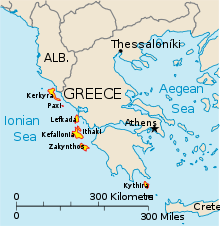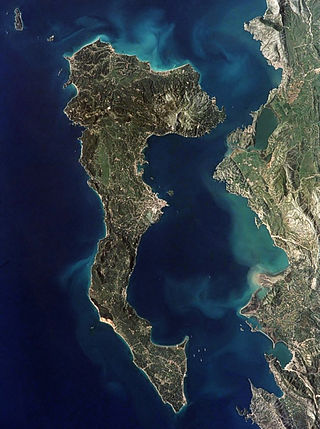
Corfu or Kerkyra is a Greek island in the Ionian Sea, of the Ionian Islands, and, including its small satellite islands, forms the margin of the northwestern frontier of Greece. The island is part of the Corfu regional unit, and is administered by three municipalities with the islands of Othonoi, Ereikoussa, and Mathraki. The principal city of the island is also named Corfu. Corfu is home to the Ionian University.

Ionia was an ancient region on the western coast of Anatolia, to the south of present-day Izmir, Turkey. It consisted of the northernmost territories of the Ionian League of Greek settlements. Never a unified state, it was named after the Ionians who had settled in the region before the Archaic period.

Ithaca, Ithaki or Ithaka is a Greek island located in the Ionian Sea, off the northeast coast of Kefalonia and to the west of continental Greece.

Lefkada, also known as Lefkas or Leukas and Leucadia, is a Greek island in the Ionian Sea on the west coast of Greece, connected to the mainland by a long causeway and floating bridge. The principal town of the island and seat of the municipality is Lefkada. It is situated on the northern part of the island, approximately 25 minutes by automobile away from Aktion National Airport. The island is part of the regional unit of Lefkada.
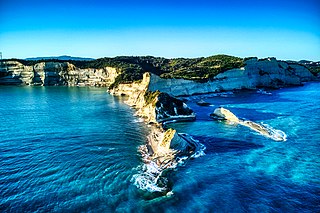
The Ionian Islands are a group of islands in the Ionian Sea, west of mainland Greece. They are traditionally called the Heptanese, but the group includes many smaller islands as well as the seven principal ones.
Lord High Commissioner is the style of High Commissioners, i.e. direct representatives of the monarch, in three cases in the Kingdom of Scotland and the United Kingdom, two of which are no longer extant. Consequently, the remaining office is often known in short simply as the Lord High Commissioner.
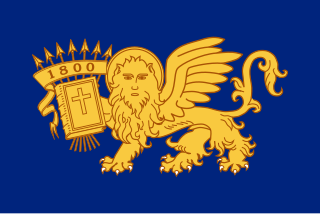
The Septinsular Republic was an oligarchic republic that existed from 1800 to 1807 under nominal Russian and Ottoman sovereignty in the Ionian Islands.

The Ionian Academy was the first Greek academic institution established in modern times. It was located in Corfu. It was established by the French during their administration of the island as the département of Corcyre, and became a university during the British administration, through the actions of Frederick North, 5th Earl of Guilford in 1824. It is also considered the precursor of the Ionian University. It had Philological, Law, and Medical Schools.

Corfu or Kerkyra is a city and a former municipality on the island of Corfu, Ionian Islands, Greece. Since the 2019 local government reform, it is part of the municipality Central Corfu and Diapontia Islands. It is the capital of the municipality and of the Corfu regional unit. The city also serves as a capital for the region of the Ionian Islands. The city is a major tourist attraction and Greek regional centre and has played an important role in Greek history since antiquity.

The Ionian University is a university located in the Ionian Islands, Greece. It is one of the newest institutions of Higher Education in Greece, created in 1984 pursuant to presidential order 83/84 ΦΕΚ 31 Α/20-3-84, along with the University of the Aegean and the University of Thessaly. In 2018, TEI of Ionian islands merged into the Ionian University.
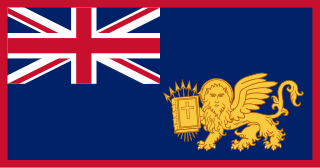
The United States of the Ionian Islands was a Greek state and amical protectorate of the United Kingdom between 1815 and 1864. The successor state of the Septinsular Republic, it covered the territory of the Ionian Islands, as well as the town of Parga on the adjacent mainland in modern Greece. It was ceded by the British to Greece as a gift to the newly enthroned King George I, apart from Parga, which was sold to Ali Pasha of Ioannina in 1819.

Frederick North, 5th Earl of Guilford,, styled The Honourable Frederick North until 1817, was a British politician and colonial administrator.

Aristotelis Valaoritis was a Greek poet, representative of the Heptanese School, and politician. He was also the great-grandfather of Nanos Valaoritis, one of the most distinguished writers of Greece.

The first period of French rule in the Ionian Islands lasted from June 1797 to March 1799. Following the fall of the Republic of Venice in May 1797, the Ionian Islands, a Venetian possession, were occupied by Revolutionary France. The French instituted a new, democratic regime and, following the Treaty of Campo Formio, annexed the islands to France, forming the three departments of Corcyre (Corfu), Ithaque (Ithaca) and Mer-Égée.
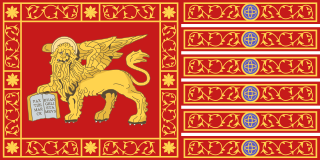
The Ionian Islands were an overseas possession of the Republic of Venice from the mid-14th century until the late 18th century. The conquest of the islands took place gradually. The first to be acquired was Cythera and the neighboring islet of Anticythera, indirectly in 1238 and directly after 1363. In 1386, Corfu voluntarily became part of Venice's colonies. A century later, Venice captured Zante in 1485, Cephalonia in 1500 and Ithaca in 1503. The conquest was completed in 1718 with the capture of Lefkada. Each of the islands remained part of the Venetian Stato da Màr until Napoleon Bonaparte dissolved the Republic of Venice in 1797, annexing Corfu. The Ionian Islands are situated in the Ionian Sea, off the west coast of Greece. Cythera, the southernmost, is just off the southern tip of the Peloponnese and Corfu, the northernmost, is located at the entrance of the Adriatic Sea. In modern Greek, the period of Venetian rule over Greek territory is known as Venetokratia or Enetokratia and literally means "rule of the Venetians". It is believed that the Venetian period on the Ionian Islands was agreeable, especially compared with the coinciding Tourkokratia — Turkish rule over the remainder of present-day Greece.

The Palace of St. Michael and St. George is a palace in Corfu City on the island of Corfu, Greece. Commissioned by Sir Thomas Maitland, it originally served as the residence of the British Lord High Commissioner of the Ionian Islands. It was built between 1819 and 1824, to a neoclassical design of Colonel George Whitmore.

Gregory VI, baptismal name Georgios Fourtouniadis was Ecumenical Patriarch in the periods 1835–1840 and 1867–1871.

The Flag of the United States of the Ionian Islands was used between 1815 and 1864. The flag consisted of a Blue Ensign with the coat of arms of the predecessor state, the Septinsular Republic on it with a red border.

The Maitland Monument, also known as the Maitland Rotunda or the Peristyle of Maitland, is a neoclassical monument located at the end of Spianada Square in Corfu. It was built in 1821 to honour Sir Thomas Maitland, a British military officer who was the last Civil Commissioner and first Lord High Commissioner of the Ionian Islands.

The second period of French rule in the Ionian Islands began in August 1807, when the Septinsular Republic, a Russian protectorate comprising the seven Ionian Islands, was occupied by the First French Empire in accordance with the Treaty of Tilsit. The French annexed the Republic but maintained most of its institutions for local governance. In 1809–10, the British occupied the southernmost islands, leaving only Corfu, Paxoi, and the mainland exclave of Parga in French hands. The British also imposed a naval blockade on the French-ruled islands, which began to suffer from famine. Finally, the British occupied Paxoi in late 1813 and Parga in March 1814. Following the Abdication of Napoleon, the French governor-general in Corfu, François-Xavier Donzelot, capitulated and the French garrison was evacuated. In 1815, the islands became a British protectorate, the United States of the Ionian Islands.
